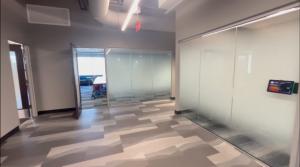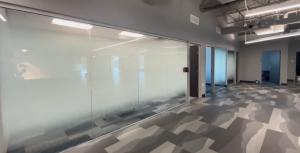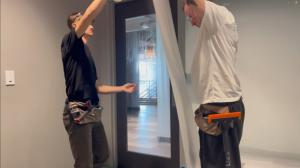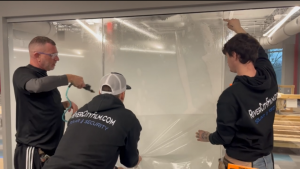Design Trends Shaping Decorative Window Film Usage in Interiors
Advancements in Decorative Films
SHEPHERDSVILLE, KY, UNITED STATES, August 19, 2025 /EINPresswire.com/ -- Decorative films for windows are becoming integral to modern interior design. These films offer versatility in light diffusion, privacy control, and aesthetic enhancement. In commercial and residential environments, film designs now mimic etched glass, frosted patterns, geometric motifs, and organic textures. Advances in digital printing and laser etching have enabled precise customization that suits architectural themes, workplace privacy needs, and residential style preferences.Integration of Light Control and Aesthetics
Decorative window films combine function with visual appeal. In open floorplans and office settings, film installation can soften natural light while maintaining brightness. High-pattern designs that diffuse glare support comfort without sacrificing daylight. This approach to decorative window tint helps create private zones without opaque barriers. Recent projects showcase layering multiple film designs to control daylight while adding visual interest to glazed spaces.
Material Innovation Influencing Interior Design
Traditional frosting or etched glass is no longer the only option. Vinyl-based films, laminated safety films, and chromatic gradients are now widely used. Some products include dynamic opacity technologies, including switchable films activated by voltage. The emergence of high-grade polymer and diffusion substrates has expanded creative options. Architectural firms are specifying these material types based on clarity, durability, and installation compatibility with mixed glass types. Such materials align function and longevity for long-term design solutions.
Private Spaces With Visual Cohesion
Decorative films for windows enable customizable privacy in interiors. Office meeting rooms, elevators, retail storefronts, and healthcare spaces frequently incorporate partial frosted or patterned film. This approach delivers visual separation with design continuity. In hospitals or clinics, film patterns often support brand identity or calming aesthetics. In corporate settings, semitransparent tint film on glass walls can define interior zones without blocking sightlines or daylight.
Sustainable and Regulatory Considerations
Designers and facility planners are evaluating decorative film not only for aesthetics but for energy and safety contributions. Some decorative window films carry thermal insulation properties, reducing HVAC load by mitigating solar heat gain. While many decorative films do not block UV at the same level as specialized solar films, certain options offer combined function. Regulatory requirements in commercial buildings may influence film opacity, light transmission, or fire-safety compliance. Selection of certified materials and installation to code remains a critical consideration.
Commercial and Institutional Applications
Decorative window films are increasingly prevalent in institutional projects. Educational facilities, libraries, and corporate headquarters use film to deliver branded visuals, departmental signage, and wayfinding on glass surfaces. Decorative window tint provides a non-permanent alternative to etched or sandblasted glass installations and offers flexibility in design changes. Film retrofits enable older buildings to enhance glass partitions without major renovation.
Aesthetic Flexibility and Remix Designs
Interior trend leaders are embracing remix designs combining geometric, metallic, and organic patterns. Films now include metallic-infused finishes, granular textures, gradient shadings, and asymmetric motifs. The film may be installed in horizontal or vertical segments, accentuating architectural lines. These design elements stand out especially in transitional spaces such as atriums or lobbies, where both light control and visual rhythm are essential.
Benefits of Product Quality and Installation Standards
Performance depends significantly on the film substrate, adhesive profile, and installation practices. Proper surface preparation, precise cutting, and alignment determine the final visual outcome and longevity. Post-installation maintenance procedures—such as cleaning with glass-friendly solutions—preserve clarity and adhesion. Certified installation methods help prevent color shifting, lifting edges, and air entrapment. Use of decorative window films that carry product warranties ensures consistent lifespan and visual stability.
Future Outlook for Decorative Window Films
Future trends suggest a growing demand for hybrid films that offer both visual impact and thermal performance. Integration of films with smart glass and electrochromic systems may redefine transparency control in high-end interiors. Environmental considerations—such as low-VOC adhesives, recyclable substrates, and solar performance certifications—are influencing industry selection. As interior architecture continues toward transparency and light modulation, decorative film remains a cost-effective and adaptable solution.
About River City Film
River City Film is a Louisville-based window film provider specializing in decorative window films, solar control films, and safety/security films. The business offers a range of solutions tailored to residential, commercial, and institutional interiors. With expertise in decorative films for windows, the company emphasizes installation precision, compliance with design specifications, and long-term performance. Its service includes design consultation, substrate selection, and professional application by experienced technicians, addressing both aesthetic and functional needs.
Chad Raymer
River City Film
+1 502-338-1644
sales@rivercityfilm.com
Visit us on social media:
Instagram
Facebook
Legal Disclaimer:
EIN Presswire provides this news content "as is" without warranty of any kind. We do not accept any responsibility or liability for the accuracy, content, images, videos, licenses, completeness, legality, or reliability of the information contained in this article. If you have any complaints or copyright issues related to this article, kindly contact the author above.
Pilates Equipment and Gears Market 2025 Trends: Expected to Grow at a CAGR of 10.5% from 2022 to 2031, Claims AMR
Associated Scaffolding Announces Multiple Job Openings Across the Southeast
Intelligent Evacuation System Market Reach USD 1.15 Billion by 2030 Globally
Więcej ważnych informacji
 Jedynka Newserii
Jedynka Newserii

 Jedynka Newserii
Jedynka Newserii

Prawo

Kolejne polskie miasta chcą być przyjazne dzieciom. Planują stworzyć najmłodszym dobre warunki do rozwoju
Cztery miasta w Polsce posiadają tytuł Miasta Przyjaznego Dzieciom nadany przez UNICEF Polska. Dziewięć kolejnych miast czeka na certyfikację, a w ostatnich miesiącach do programu zgłosiło się kilka następnych. Na całym świecie inicjatywa została przyjęta już w ponad 4 tys. samorządów, a w Hiszpanii objęła połowę dziecięcej populacji miast. Program UNICEF-u ma na celu zachęcenie włodarzy do traktowania najmłodszych obywateli w sposób podmiotowy, respektowania ich praw i zaproszenia ich do współdecydowania o przyszłości.
Przemysł
W ciągu roku w Polsce ubyło 500 przedsiębiorstw odzieżowo-tekstylnych. Problemem są spadki zamówień z Europy Zachodniej i wzrost kosztów

Wartość rynku odzieżowego w Polsce wynosi 66,9 mld zł, z czego 10 mld zł to wartość krajowej produkcji – wynika z danych PIOT. Od czasu pandemii branża mierzy się z szeregiem wyzwań, wśród których najpoważniejsze to wzrost kosztów pracy i produkcji, przerwane łańcuchy dostaw i spadek zamówień – zarówno w kraju, jak i za granicą, a także wzrost nieuczciwej konkurencji na rynku, czyli głównie importu z Chin. Skala wyzwań sprawia, że w ubiegłym roku z rynku zniknęło 500 firm. Producenci odzieży apelują do rządu o wsparcie.
Handel
D. Obajtek: Orlen powinien być o 30–40 proc. większą spółką. Byłoby to z korzyścią dla konsumentów

Orlen jest największym polskim przedsiębiorstwem. Jego przychody ze sprzedaży w 2024 roku wyniosły blisko 295 mln zł, a rok wcześniej – ponad 372 mln – wynika z raportu Rzeczpospolitej „Lista 500”. W ubiegłorocznym rankingu Fortune 500 uwzględniającym największe korporacje znalazł się na 216. miejscu na świecie i 44. w Europie. Według Daniela Obajtka, europosła PiS-u i byłego prezesa Orlenu, spółka powinna jeszcze urosnąć, tym samym gwarantując konsumentom szereg korzyści, a także przyspieszać inwestycje m.in. w obszarze petrochemii i energetyki zero- oraz niskoemisyjnej.
Partner serwisu
Szkolenia

Akademia Newserii
Akademia Newserii to projekt, w ramach którego najlepsi polscy dziennikarze biznesowi, giełdowi oraz lifestylowi, a także szkoleniowcy z wieloletnim doświadczeniem dzielą się swoją wiedzą nt. pracy z mediami.













.gif)

 |
| |
| |
|